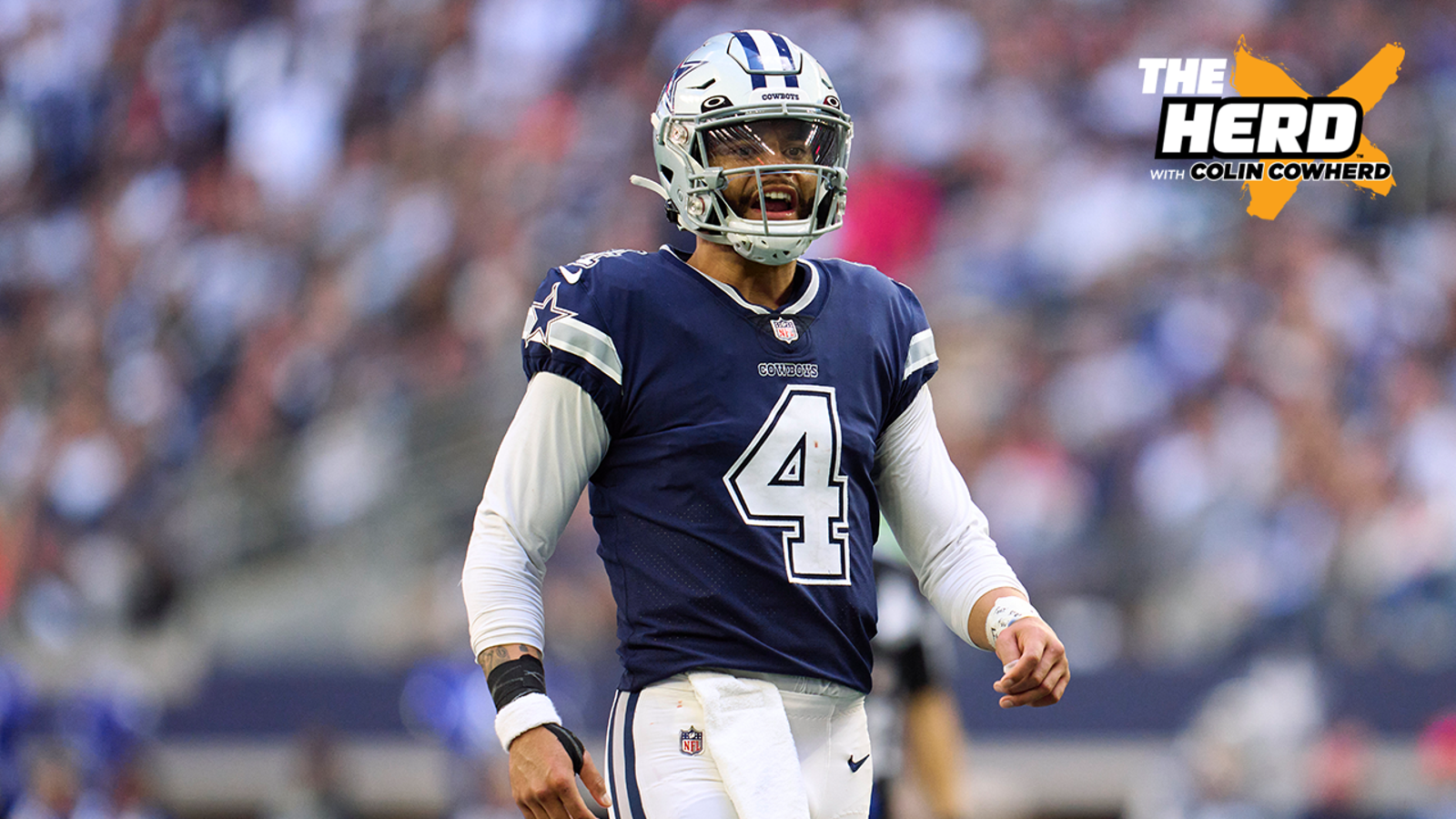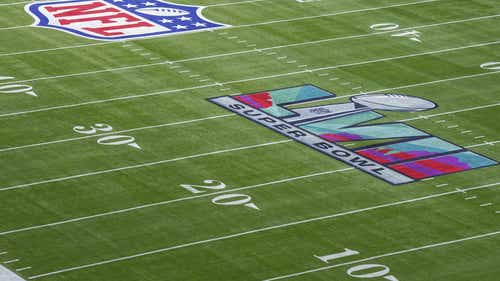
Dissecting Colts' QB decision; how Zach Wilson is hindering Jets offense: NFL Week 8 analysis
What Were The Colts Thinking?
I'm not sure.
But here's what happened, according to what can be pieced together.
The head coach, the general manager and the owner got together to meet about the team's direction. The result of that meeting was to bench quarterback Matt Ryan and start Sam Ehlinger for the rest of the season.
From the sound of it, this was a decision made, or at least heavily influenced, by the owner.
My spin on the decision: For years, the Colts have tried to find a veteran fill-in for the quarterback position following the retirement of Andrew Luck. First Philip Rivers, then Carson Wentz, then Ryan. All of them have failed. And perhaps the owner wanted the team to shift in the direction that most successful teams have used, and that is to find a QB in the draft, take advantage of his extremely affordable salary, play him, and if he's the guy after three or four seasons, pay him.
The only reason you would start Ehlinger over Nick Foles is to find out what he is. You cannot possibly believe Ehlinger will give you a better chance to win than Foles. But you drafted Ehlinger on Day 3 in 2021, you haven't started him, and he hasn't thrown an NFL pass, so you should see what he is. And if he's bad, you lose and draft a QB next year. And if he's good, you got extremely lucky.
But there's something to be said about putting your players in the best position to succeed and using proper strategy when starting a young, less talented QB who has never thrown a pass in a regular season game before.
The Washington Commanders defense rank No. 6 in pressure rate. They excel at getting after the quarterback.
So here's my issue:
Ehlinger and his wheels had zero rushing attempts of any kind in the first half of Sunday's game. He didn't have a single designed run. He wasn't encouraged to scramble on a called pass. He never kept the ball on a single option play.
The game plan should have been formulated to take advantage of his strength. Did the Colts really expect Ehlinger to pass from the pocket BETTER than Matt Ryan, and to do so against a top-10 pass rush? I didn't understand that game plan at all.
The next question is why fire OC Marcus Brady after the game when head coach Frank Reich calls the offensive plays?
The only scenario where that would make sense is if the owner told the head coach to start Ehlinger, and the head coach told his OC to create the entire game plan. Any situation aside from that, and the move to fire the OC is extremely puzzling … as was the game plan in Ehlinger's first start.
The Cowboys Should Stick With Play Action
In Dak Prescott's last two season, the Cowboys never used extensive amounts of play action. The NFL average was a 26% usage rate.
The Cowboys:
- 2020: 28%
- 2021: 26%
But since Prescott's return from injury, the Cowboys have used play action on an incredible 48% of his dropbacks. That ranks No. 1 in the NFL over that span (minimum of 50 attempts).
Compare the Cowboys' historical rate of play action on early downs in the first three quarters:
- 2020: 45%
- 2021: 37%
- 2022 with Cooper Rush: 41%
- 2022 last two weeks with Dak Prescott: 54%
Prescott's splits with and without play action the last two weeks on these early down dropbacks?
- With play action: +0.28 EPA/att, 52% success, 7.1 YPA, 1 TD, 0 INT
- Without play action: -0.12 EPA/att, 50% success, 6.8 YPA, 0 TD, 1 INT
The Cowboys would be wise to utilize play action at a high rate when they return from their Week 9 bye.
Are the Cowboys a threat in the NFC?
Zach Wilson Needs to Pass The Ball
On the season, Wilson leads the NFL in time to throw, taking 3.12 seconds on average per pass attempt.
The NFL average is 2.6 seconds.
With such a high time to throw, the question is, is he good when he extends plays and buys time? Or is he better when he throws to his initial reads and gets rid of the ball earlier?
When holding the ball for three or more seconds, Wilson ranks dead last in EPA/att in the NFL. His numbers when holding the ball for three or more seconds, out of 40 QBs, Wilson ranks:
- No. 40 in EPA/att (-0.59 vs NFL avg -0.11)
- No. 40 in success rate (17% vs NFL avg 36%)
- No. 40 in completion rate (25% vs NFL avg 53%)
- No. 40 in first-down rate (15% vs NFL avg 29%)
- No. 40 in passer rating (33.5 vs NFL avg 78.2)
- No. 35 in YPA (6.0 vs NFL avg 8.1)
Meanwhile, when Wilson throws the ball in less than three seconds, look where he ranks:
- No. 5 in YPA (8.1 vs NFL avg 6.8)
- No. 8 in first down rate (38% vs NFL avg 33%)
- No. 13 in EPA/att (+0.12 vs NFL avg +0.04)
- No. 15 in completion rate (71% vs NFL avg 69%)
- No. 24 in passer rating (93.2 vs NFL avg 94.5)
- No. 25 in success rate (47% vs NFL avg 47%)
Wilson is absolutely terrible when he holds onto the ball.
In fact, his -0.88 EPA/att on passes thrown when holding onto the ball for 3.5-plus seconds is the worst for any NFL quarterback since at least 2000 (which is as far back as charted time to throw data from TruMedia extends, min 35 pass att).
While being the worst in the NFL since at least 2000 is outrageous, this nugget is almost as crazy: On 41 dropbacks where Wilson held the ball for 3.5+ seconds, he has four completions.
FOUR! ON 41 DROPBACKS!
He's 4-for-35, 11% completions for 3.6 YPA, 9.8% success, -0.88 EPA/att and took six sacks. Also wild — in total, he has had 152 dropbacks.
- 27% of them he has taken 3.5 seconds or longer to throw the ball.
- 23% of them he has taken 4 seconds or longer to throw the ball.
That's the second-highest in the NFL. And, Wilson's splits this year are WAY worse than last year as well in this regard.
The Jets must devise a plan to get the ball out of his hands faster. He's single-handedly tanking the offense by holding onto the football.
Huge Get For The Vikings
Kirk Cousins likes to target tight ends. Prior to last year, he was hovering around 21% to 23% of all targets were to TEs, both of which were above average rates.
But last season, due to injury and lack of talent, his TE targets dropped to 16%.
This year, it's 19%. That's still slightly below the NFL average of 20%, but it was clear that the new offense wanted to get that position more involved than it was in 2021.
But the efficiency has been terrible. Examine these results:
If the Vikings can get more efficiency out of the position, thanks to acquiring T.J. Hockenson from the Lions, this will certainly raise their upside massively, considering they probably would return to targeting TEs at a league-average rate, and receive significantly more efficiency when doing so.
And TEs were really the only position holding the team down. 2022 efficiency by targeted position:
- WRs: +0.21 EPA/att
- RBs: +0.08 EPA/att
- TEs: -0.11 EPA/att
Their tight end target efficiency ranked No. 31 in the NFL.
Improve this in 2022, and you've got a higher ceiling for this offense. Now, offensively, this team will go as far or as short as Cousins can take them. He has very few excuses.
Warren Sharp is an NFL analyst for FOX Sports. He is the founder of Sharp Football Analysis and has worked as a consultant for league franchises while also previously contributing to ESPN and The Ringer, among other outlets. He studied engineering before using his statistical acumen to create predictive football models. You can follow Warren on Twitter at @SharpFootball.









